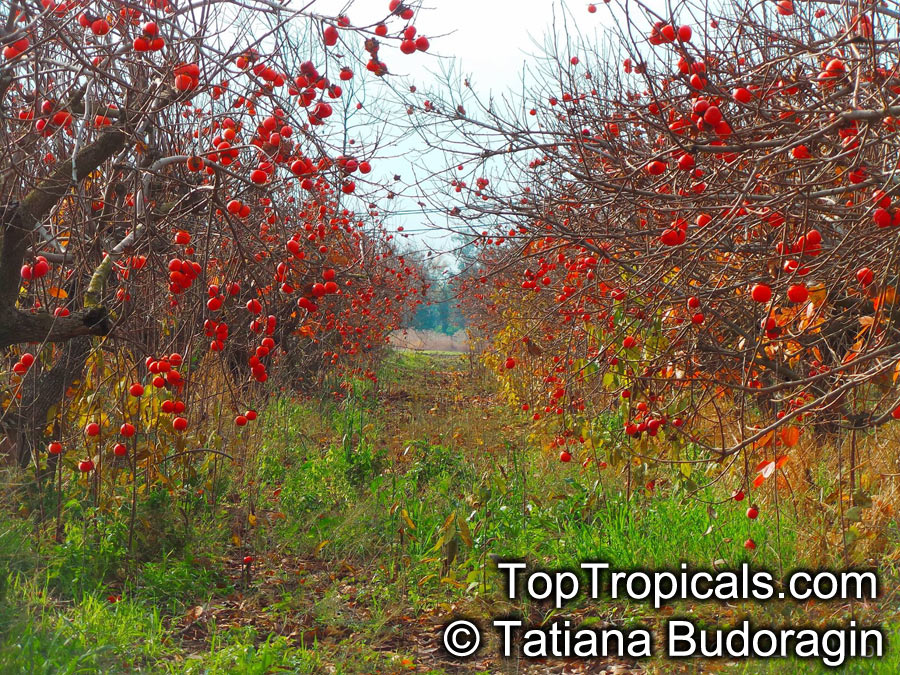Growing Persimmons
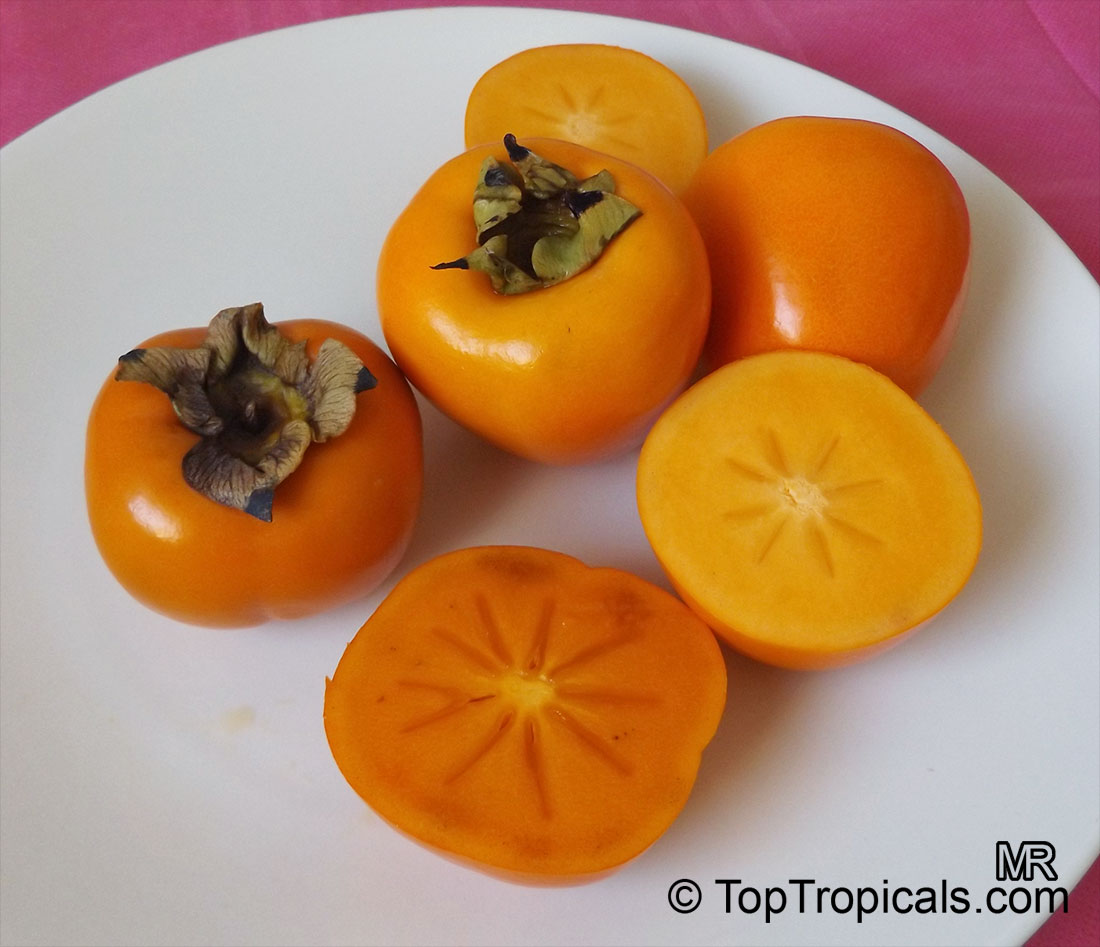
People love persimmon fruit for its sweet and unique flavor, often described as a blend of honey and apricot. Planting a persimmon tree not only provides a bountiful harvest of delicious fruit but also adds aesthetic appeal to the landscape. Additionally, persimmon trees are relatively low-maintenance, making them accessible for home gardeners seeking a fruitful and visually pleasing addition to their gardens.
The Persimmon Tree
Oriental Persimmon, orsubtropical Persimmon (Diospyros kaki) is a multitrunked or single-stemmed deciduous tree to 25 ft high and at least as wide. Persimmon tree is a handsome ornamental with drooping leaves and branches that give it a languid, rather tropical appearance. Under mild autumn conditions the leaves often turn dramatic shades of yellow, orange and red. Tea can also be made from fresh or dried leaves.
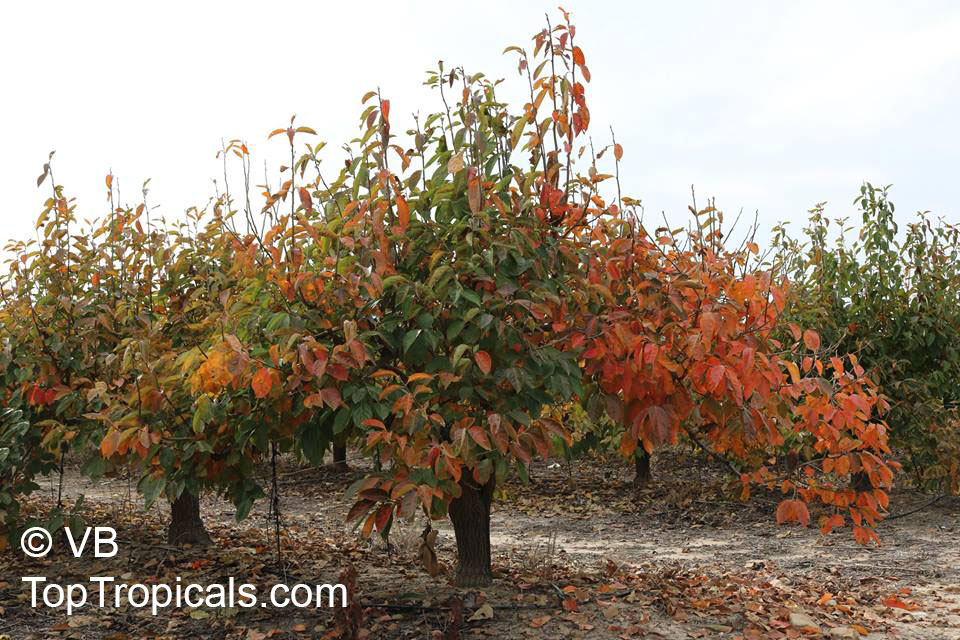
Persimmon can withstand a wide rage of conditions as long as the soil is not overly salty, but does best in deep, well drained loam. It tolerates alkaline soi and can withstand short periods of drought, but the fruit will be larger and of higher quality with regular watering. Extreme drought will cause the leaves and fruit to drop prematurely. Persimmons are relatively problem-free and pest-free.
Persimmons are classified into astringent and non-astringent cultivars. Astringent fruit must be soft or artificially treated before astringency is removed and they are suitable for eating. Fruit of the non-astringent types lose astringency while still hard and can be eaten hard or soft.
Tropical species of persommons such as Black Persimmon or Black Sapote (Diospyros digyna) are evergreen fruit trees, The fruit of Black Sapote has delicious melting pulp of almost black color, reminding of the chocolate pudding.
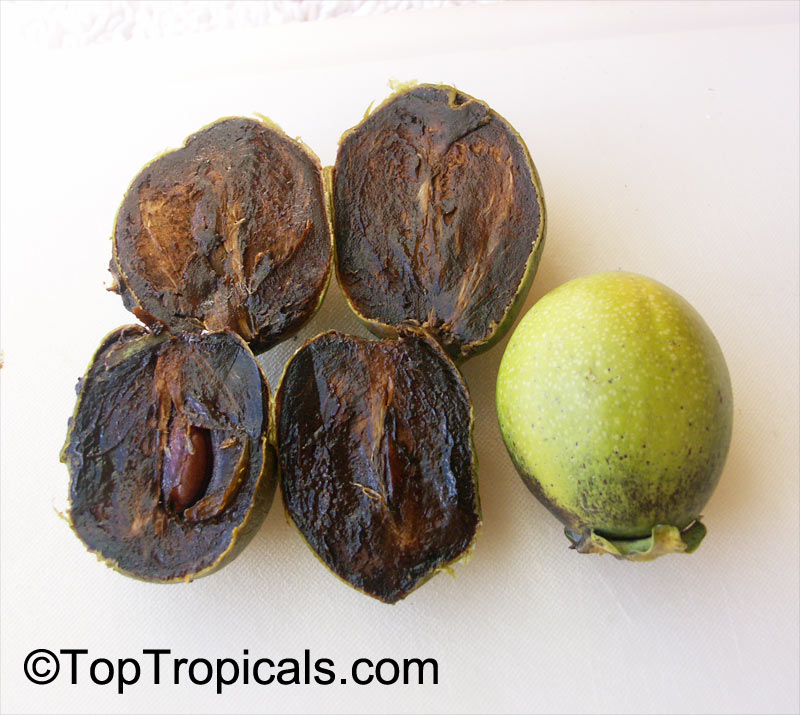
Photo above: Black Persimmon or Black Sapote (Diospyros digyna)
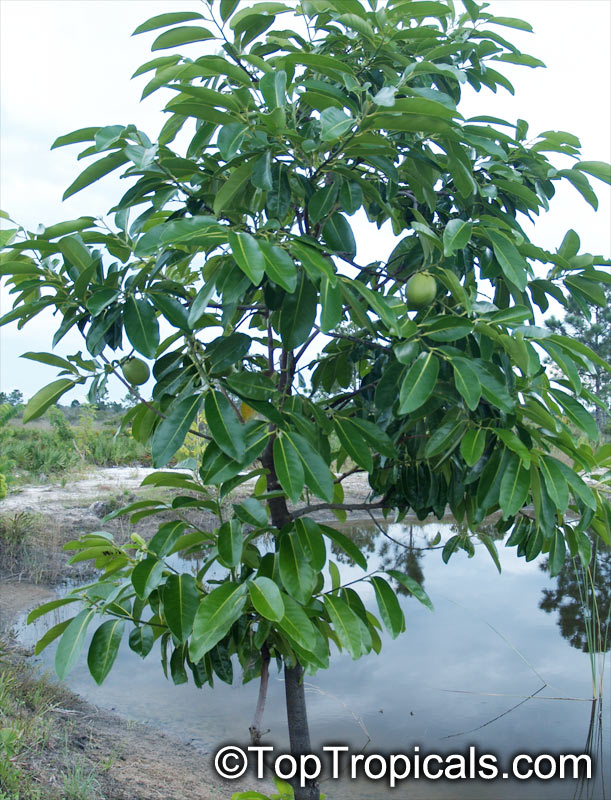
Photo above: Black Persimmon or Black Sapote (Diospyros digyna)
Container Growing of Persimmon
While persimmon trees are typically best suited for outdoor planting in the ground, certain dwarf varieties can be grown in containers. However, it's essential to choose a suitable dwarf cultivar and provide a large enough container for proper root development. Most of the oriental persimmon varieties are grafted onto the common persimmon, Diospyros virginiana.
The best varieties for contaner culture
Non-Astringent Varieties: Fuyu, Giant Fuyu, Matsumoto-Wase, Jiro, Maekawa, Izu
Astringent Varieties: Chocolate, Guang Yang, Hachiya, Meader, Saijo, Tanenashi, Winterset
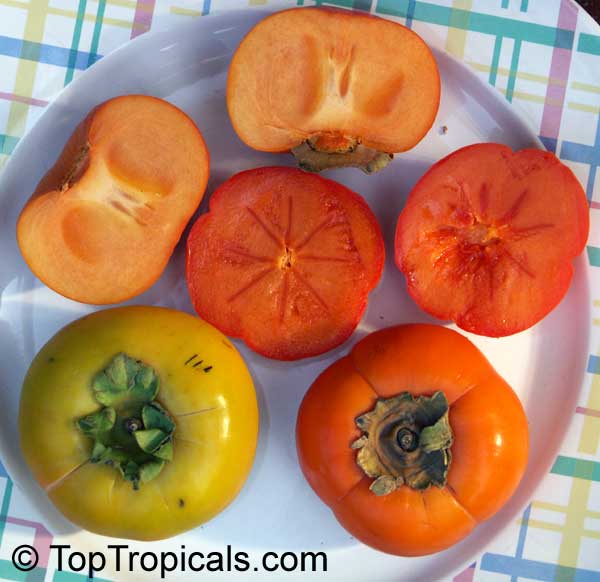
Light for Persimmon trees
Persimmon trees thrive in full sun to partial shade. Adequate sunlight is crucial for fruit production, so planting in a location that receives at least 6-8 hours of sunlight per day is recommended.
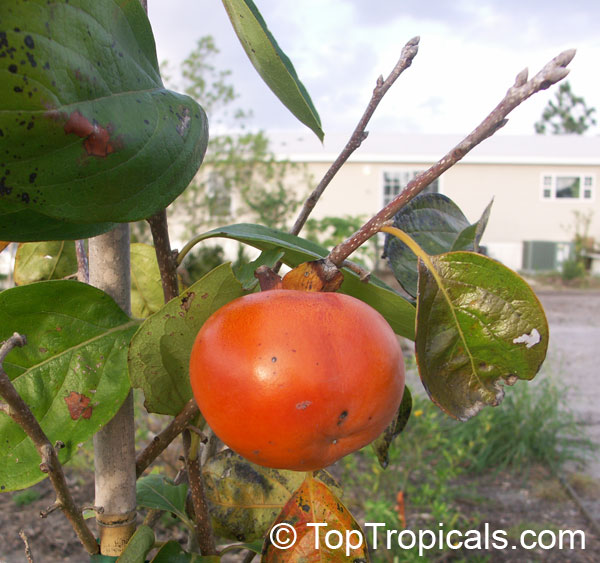
Soil for Persimmon trees
Persimmons prefer a well-draining soil with a slightly acidic to neutral pH, but they also can tolerate alcaline soils. Adding organic matter, such as compost, to the soil during planting helps enhance fertility and drainage. Mulching around the tree helps conserve soil moisture and suppress weeds.
Fertilizing Persimmon trees
Persimmon trees can be fertilized year around with liquid Sunshine Boosters such as Sunshine C-Cibus.
Slow release granulated plant food can be applied in late winter or early spring before new growth begins. Use a balanced, slow-release fertilizer, and follow the recommended dosage based on the tree's age and size. Avoid excessive nitrogen, as it may promote vegetative growth at the expense of fruiting.
Repotting Persimmon trees
Container-grown persimmons may need repotting every 2-3 years to refresh the soil and provide more space for root growth. Use a well-draining potting mix, and prune the roots if necessary during repotting. Be mindful not to disturb the roots excessively.
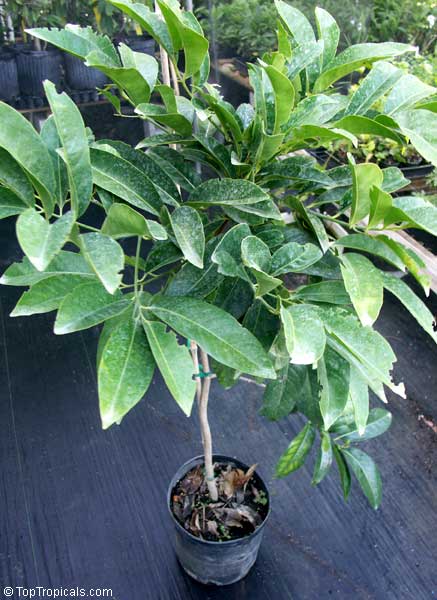
Cold protection of Persimmon trees
Persimmon tree is subtropical, most varieties are hardy to USDA zone 7-10 and can take light freezing temperatures.
In regions with cold winters, it's advisable to protect persimmon trees. While mature trees are generally much hardier, young trees may be susceptible to frost damage. Consider wrapping the trunk with burlap or using other protective measures. Container-grown persimmons may need to be brought indoors or placed in a sheltered location during extreme cold events to prevent frost damage to roots.
In summary, persimmon trees can be grown in containers, but careful consideration is needed for choosing the right cultivar and providing proper care. Ideal conditions include well-draining soil, adequate sunlight, and regular feeding. Repotting may be necessary every few years for container-grown specimens. In colder zones, winter protection is crucial, especially for younger trees and those in containers.
